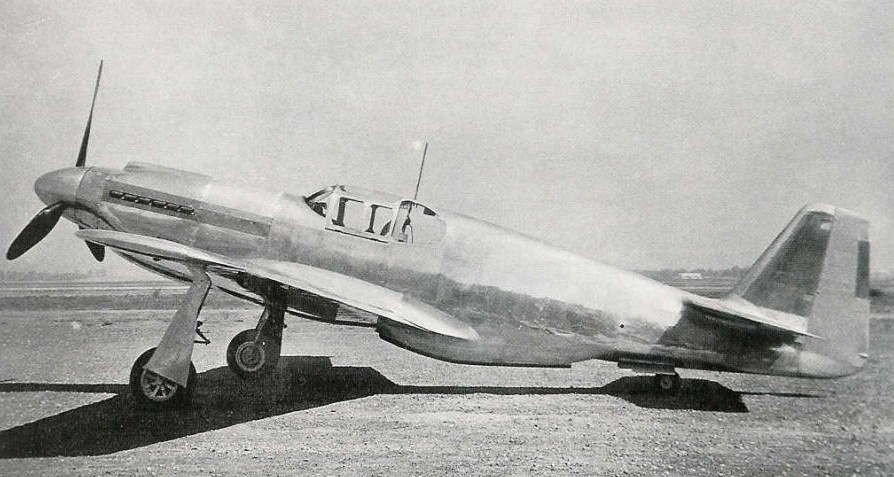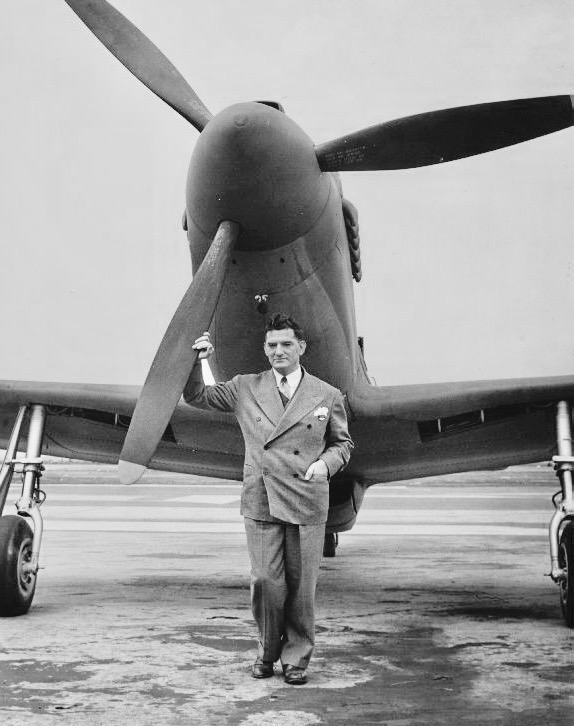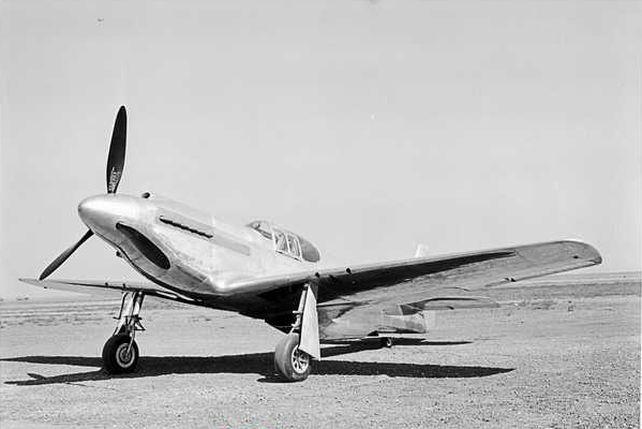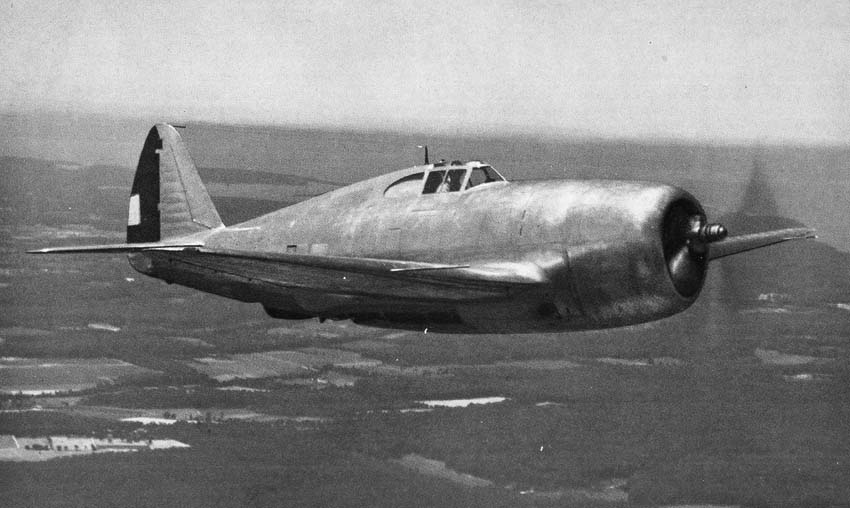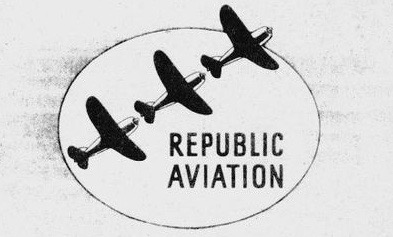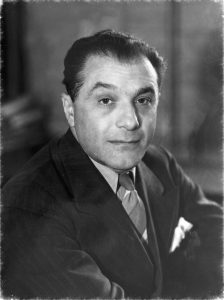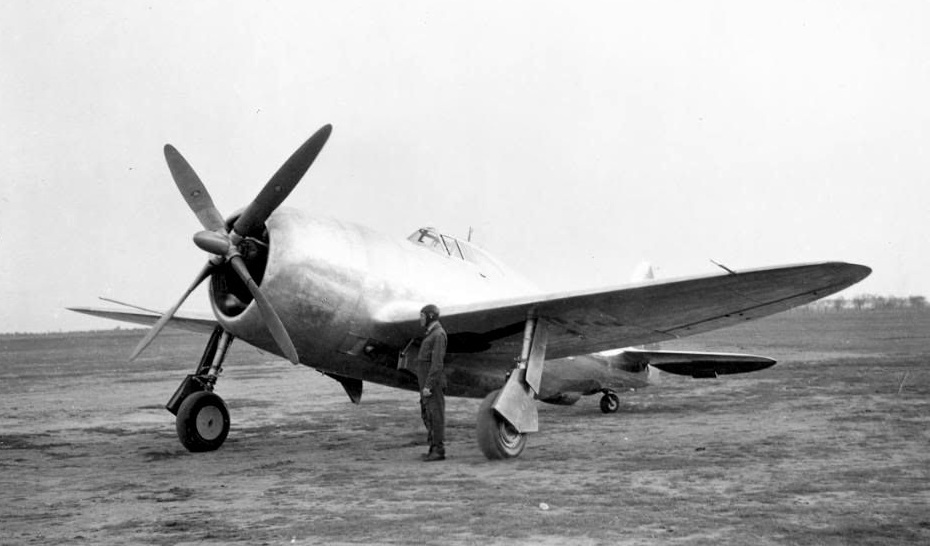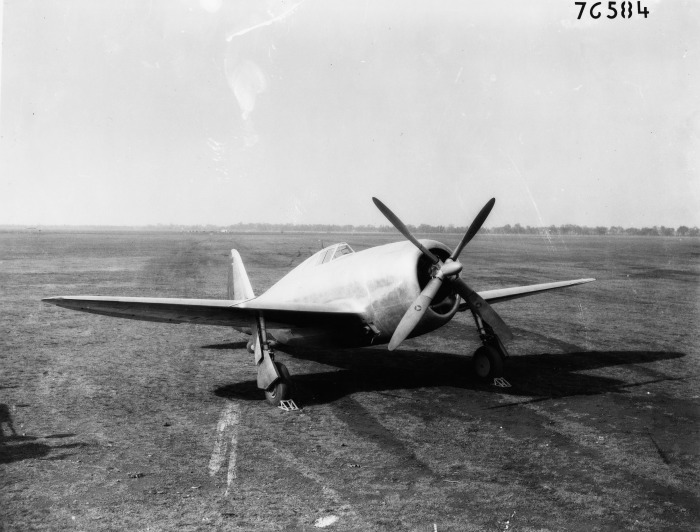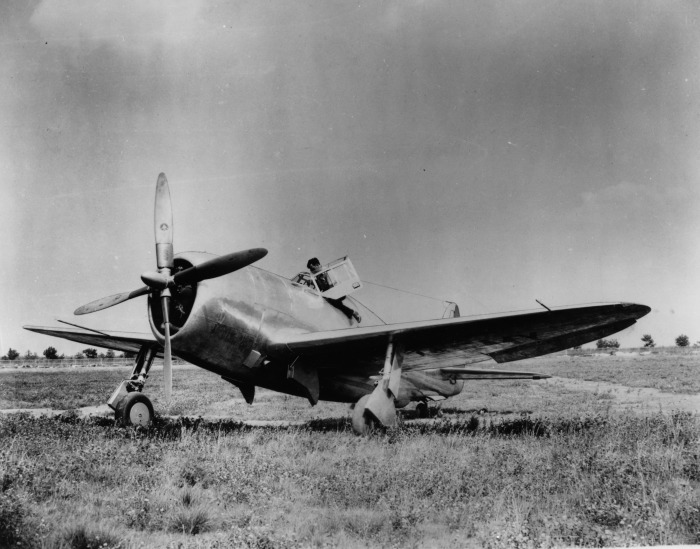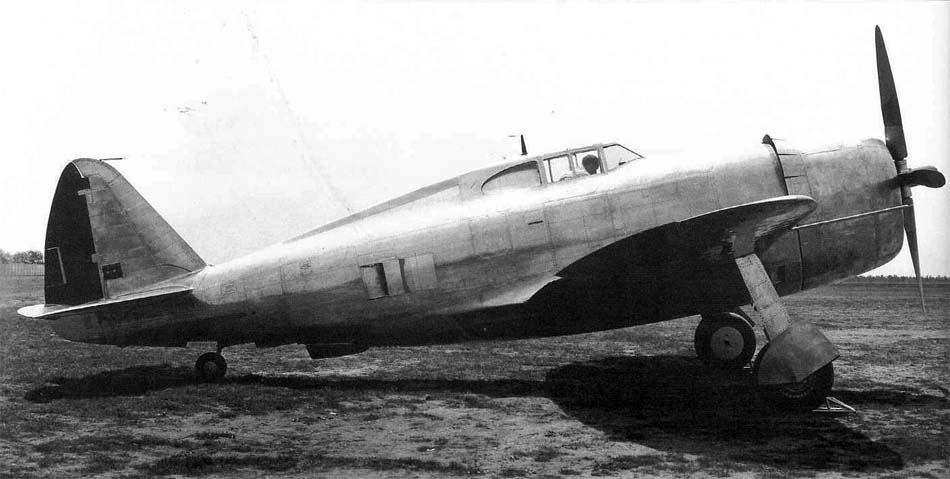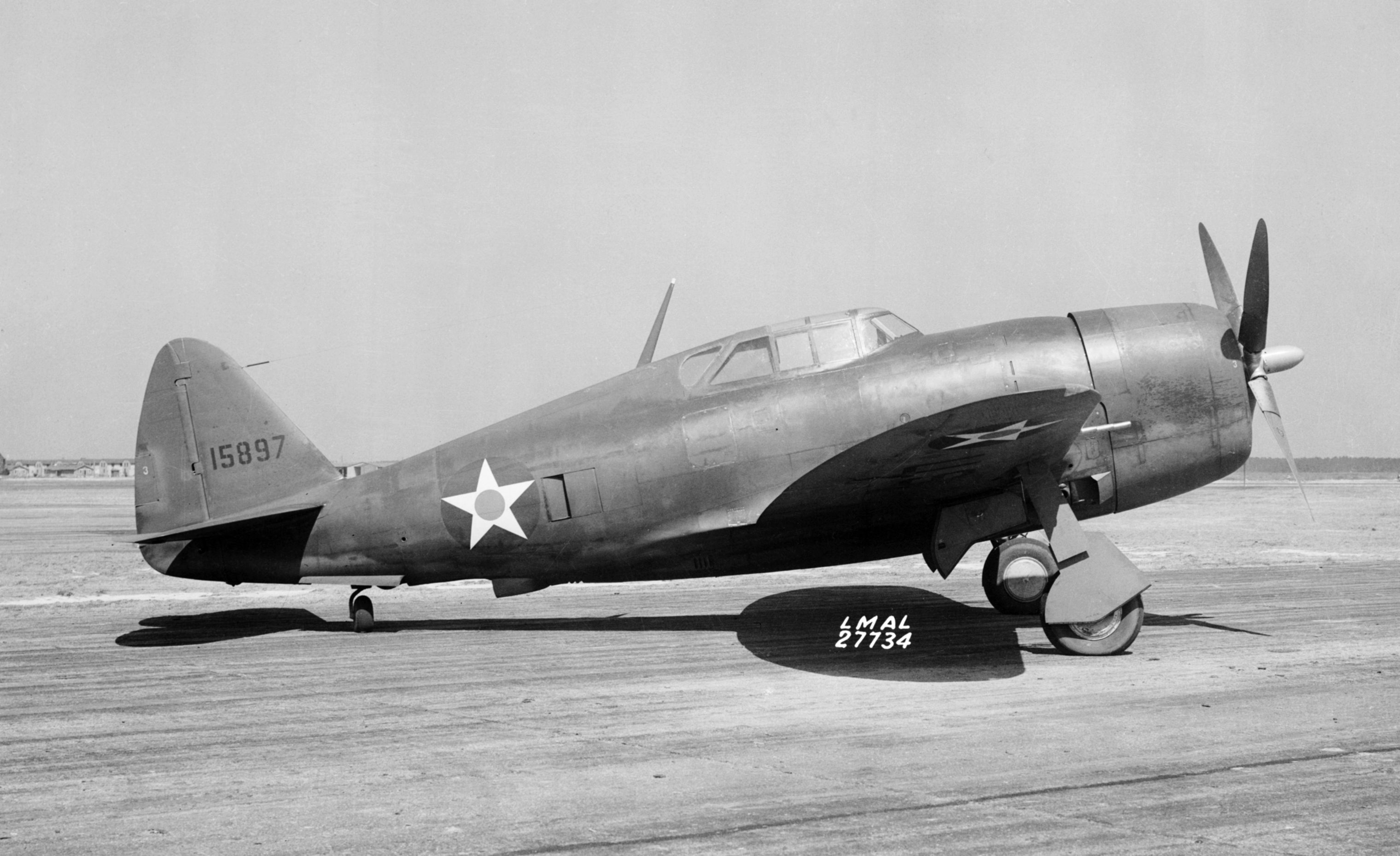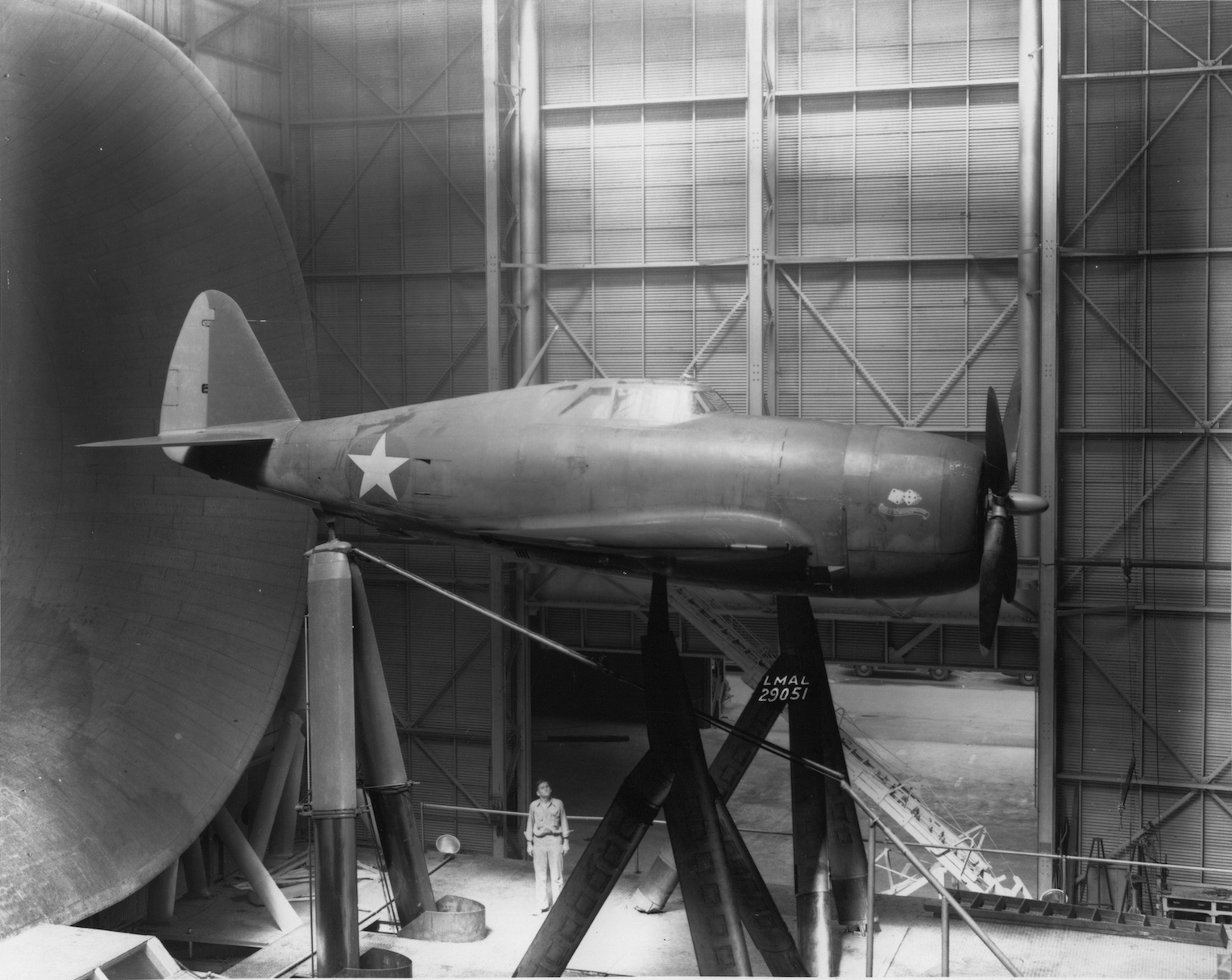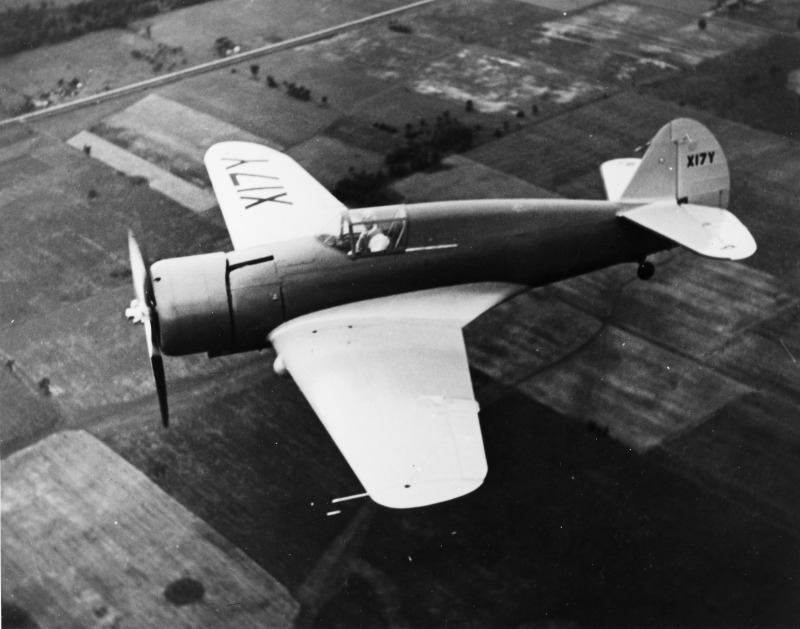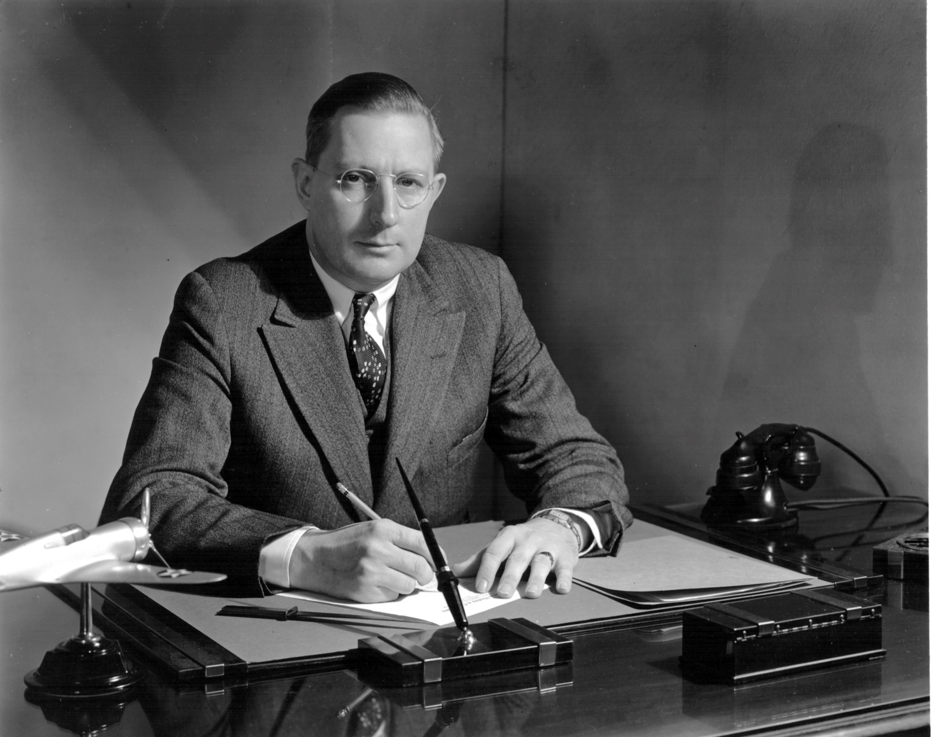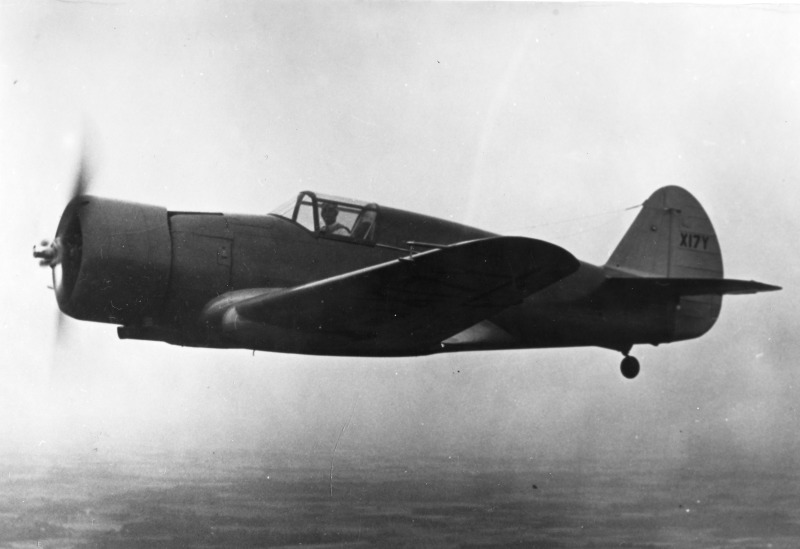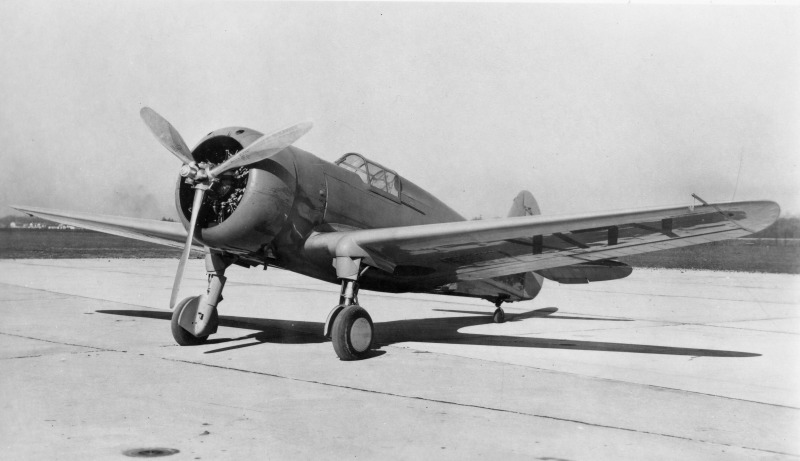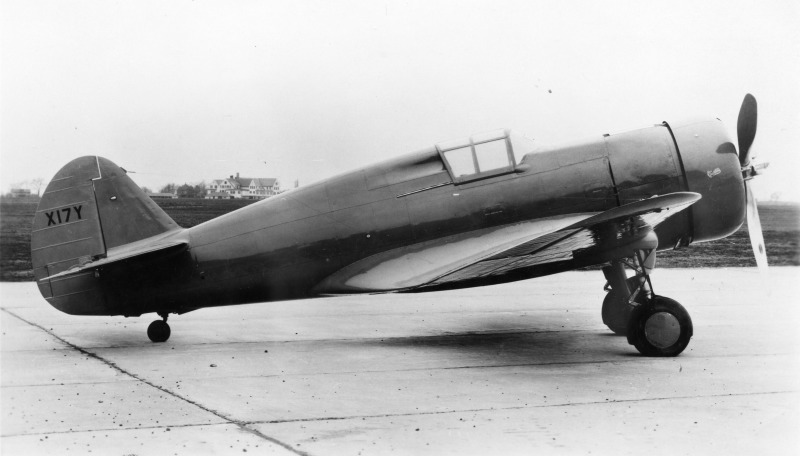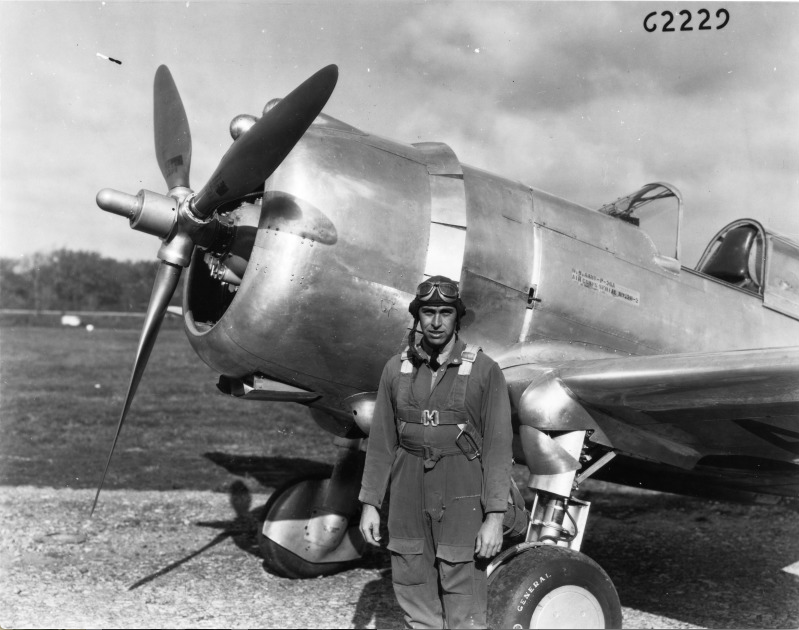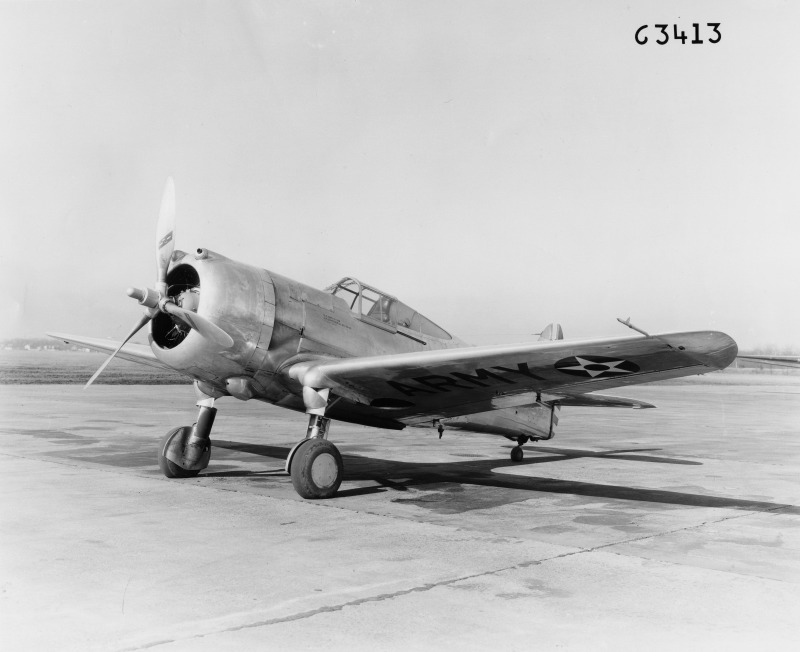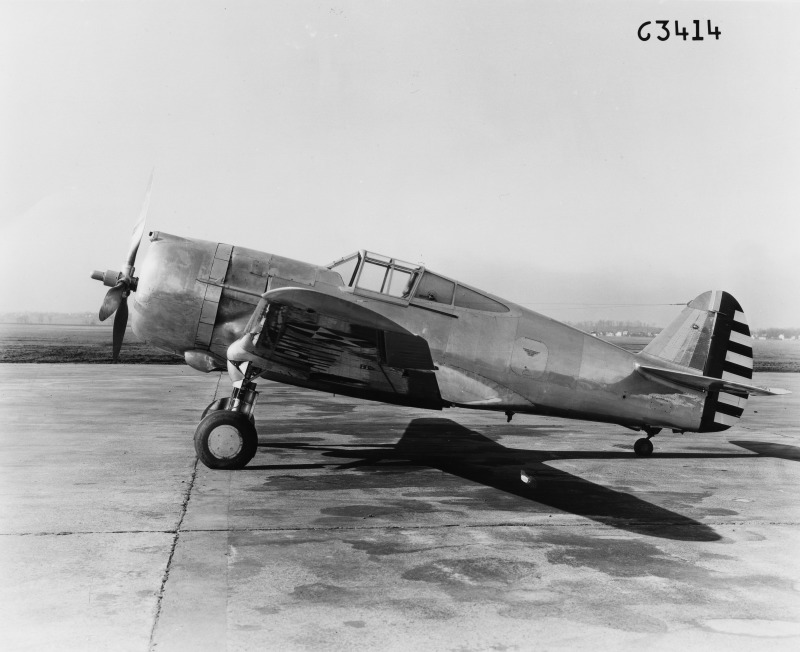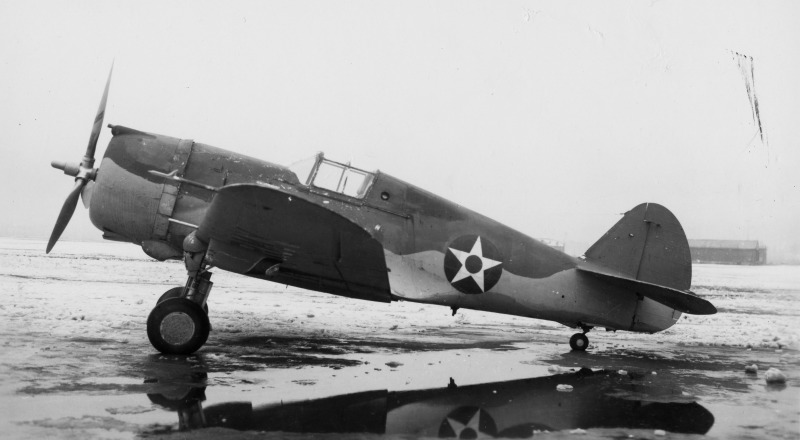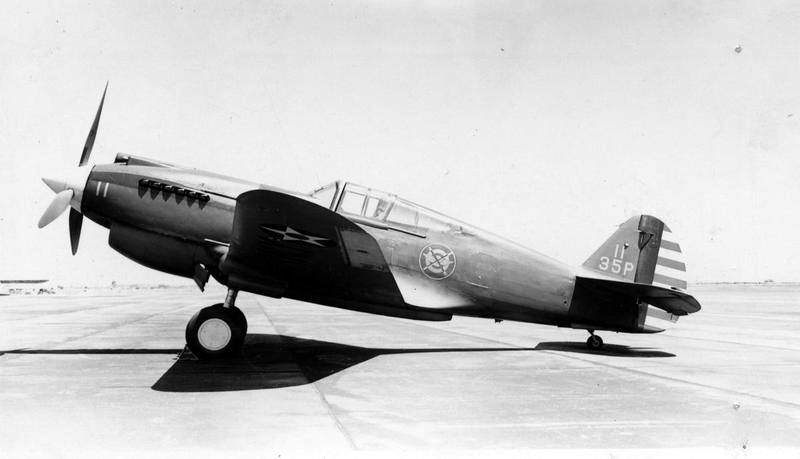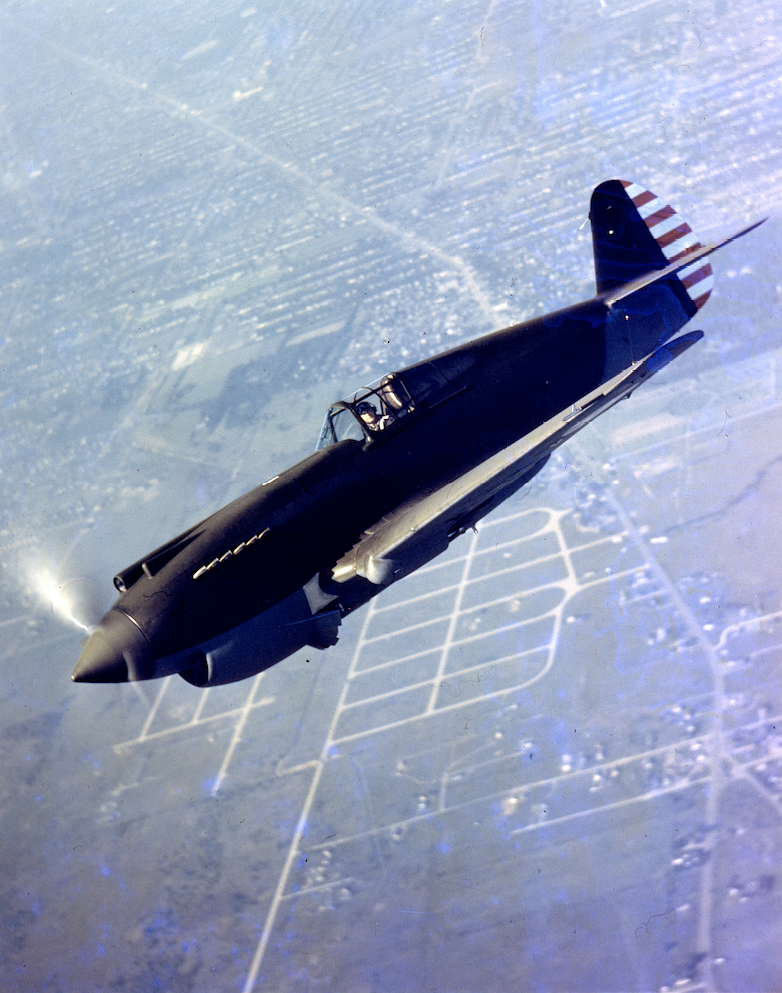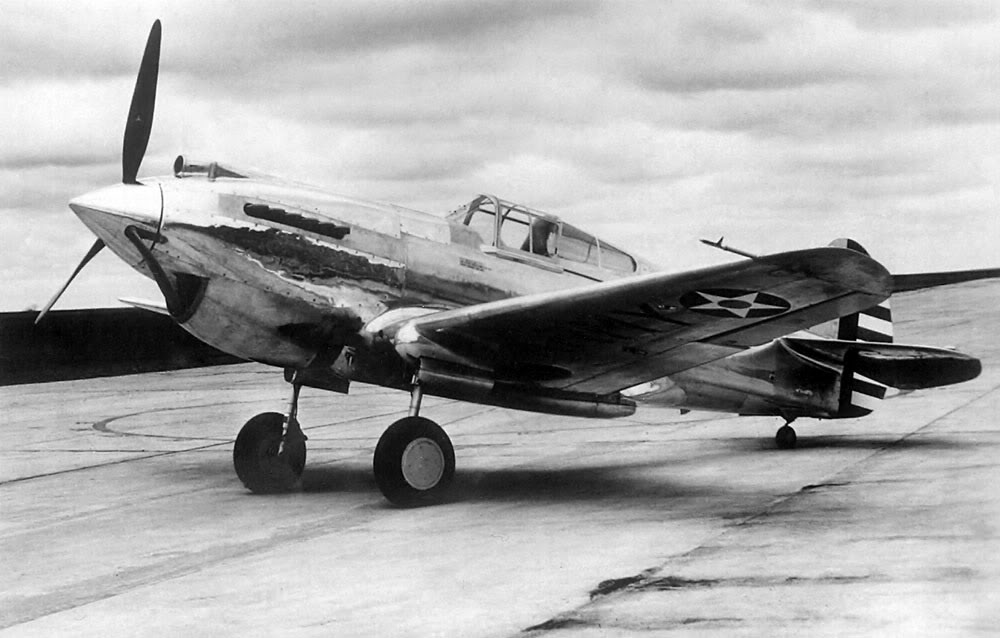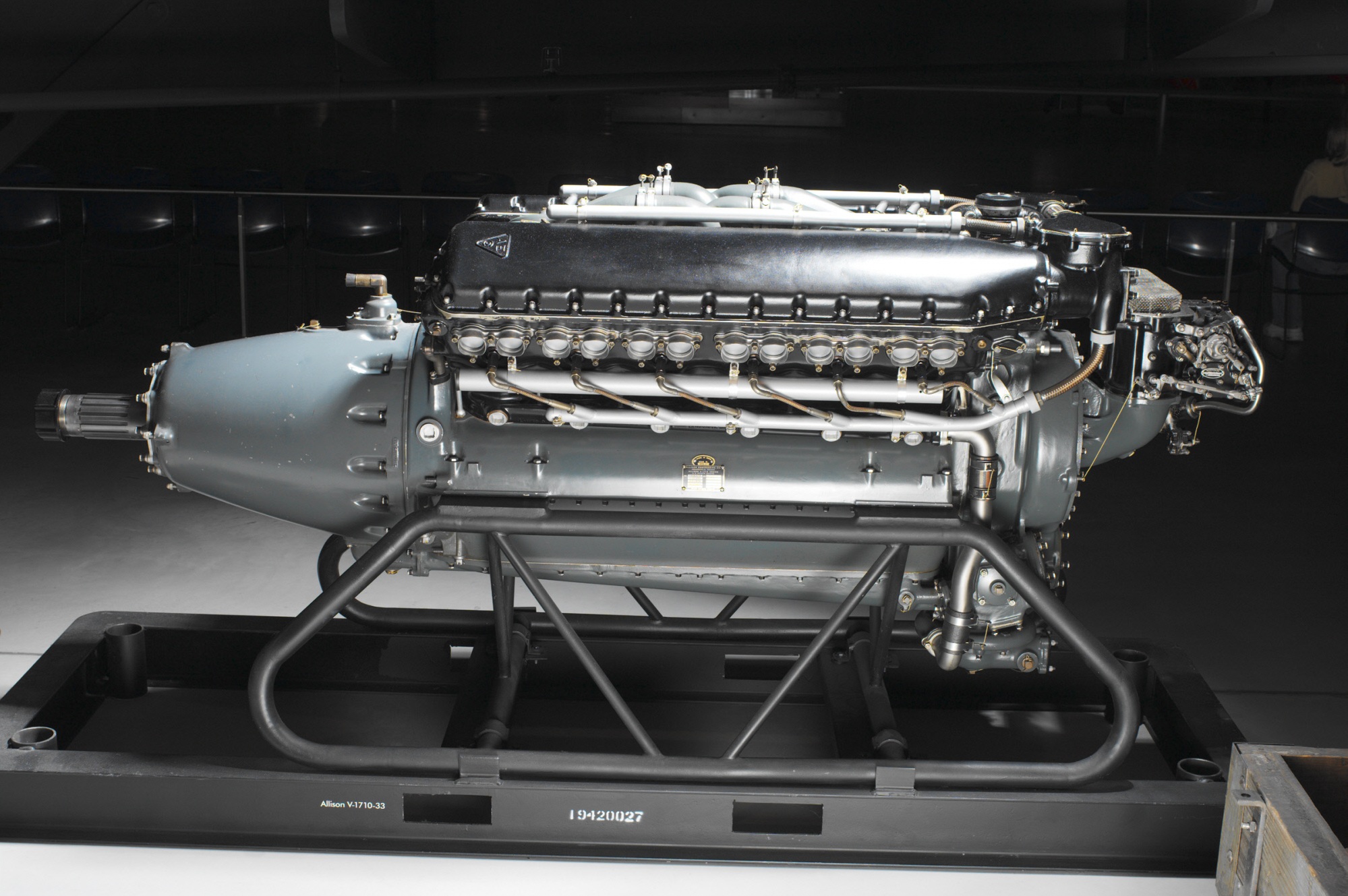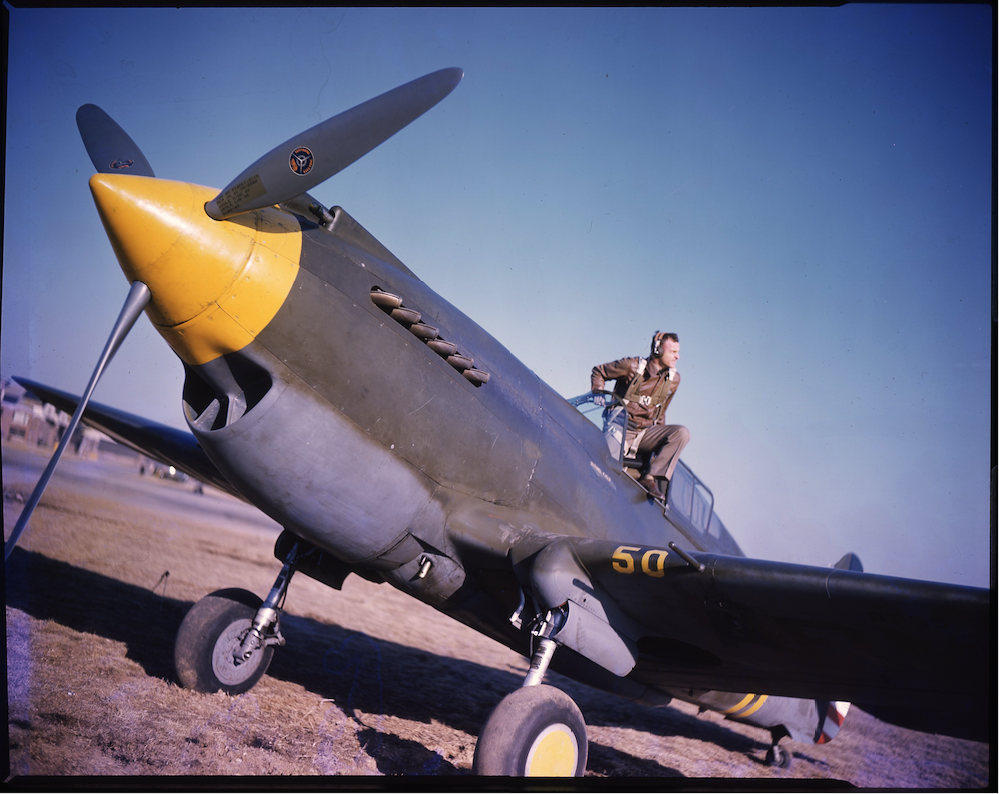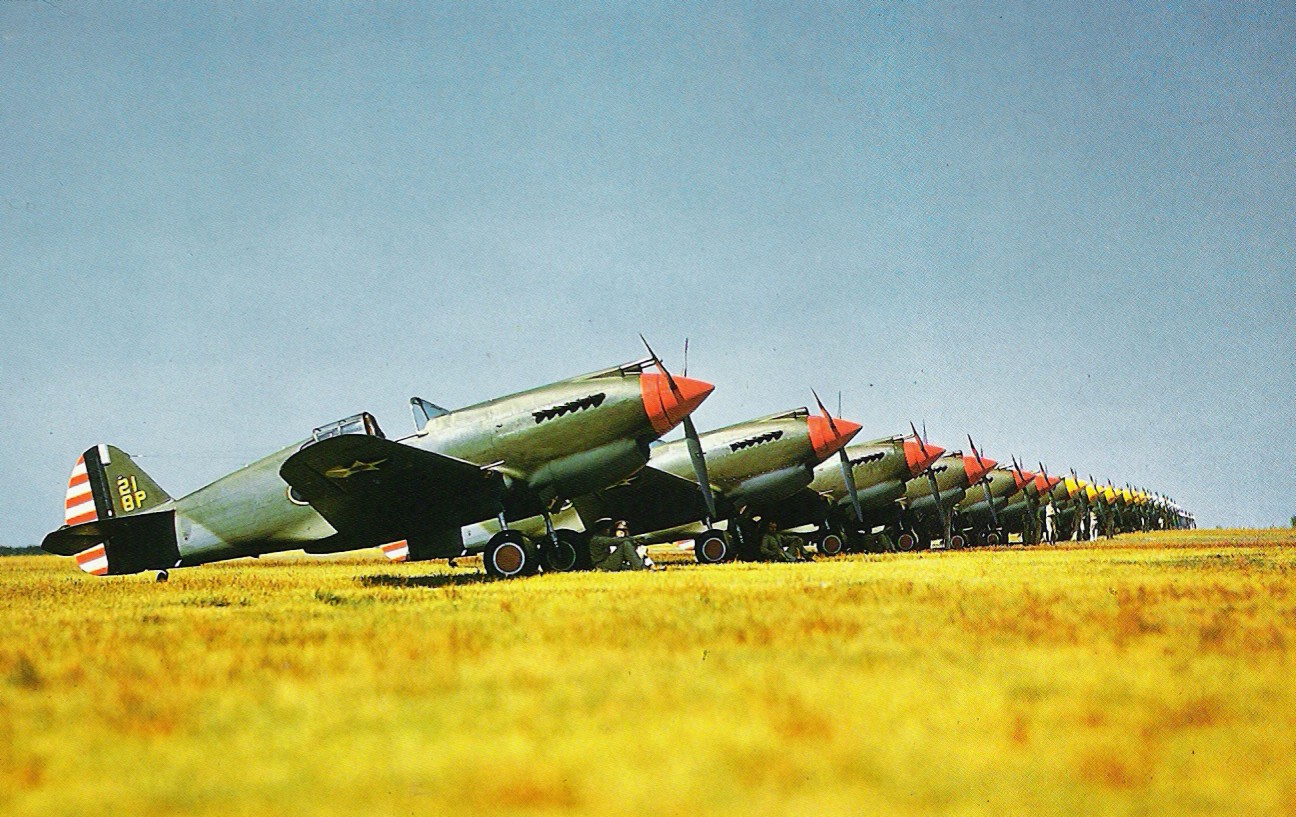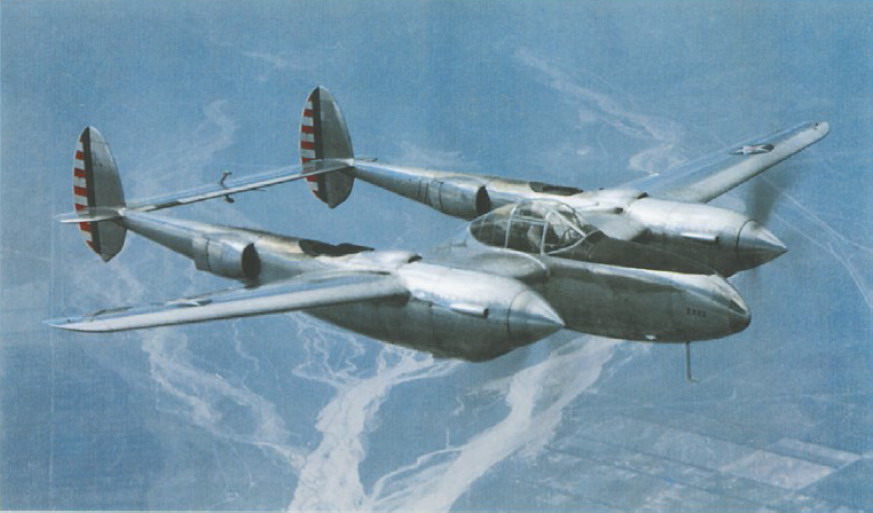
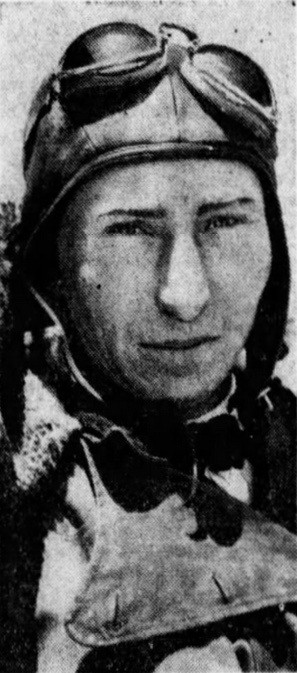
4 November 1941: Lockheed test pilot Ralph Burwell Virden was conducting high speed dive tests in the first Lockheed YP-38 Lightning, Air Corps serial number 39-689 (Lockheed’s serial number 122-2202).
As the airplane’s speed increased, it approached what is now known as its Critical Mach Number. Air flowing across the wings accelerated to transonic speeds and began to form shock waves. This interrupted lift and caused a portion of the wing to stall. Air no longer flowed smoothly along the airplane and the tail surfaces became ineffective. The YP-38 pitched down into a steeper dive and its speed increased even more.
Designed by famed aeronautical engineer Clarence L. “Kelly” Johnson, the YP-38 had servo tabs on the elevator that were intended to help the pilot maintain or regain control under these conditions. But they increased the elevator’s effectiveness too well.
The Los Angeles Times described the accident:
Witnesses said the twin-engined, double-fuselaged ship was booming westward at near maximum speed (unofficially reported to be between 400 and 500 miles an hour) when the duralumin tail assembly “simply floated away.”
A moment afterward the seven-ton craft seemed to put on a burst of speed, the the high whine of its engines rising.
It then went into a downward glide to about 1500 feet, then into a flat spin, flipped over on its back and shot earthward.
Several persons said that they thought they had heard an explosion during the dive, but qualified observers doubted it. . .
. . . Fellow pilots at Lockheed said, “Ralph was the best we had, especially in power dives.”
Robert E. Gross, president of Lockheed, said, “Ralph Virden was a great pilot but an even greater man. If anyone ever had national defense at heart it was he, who every day was carrying the science of aviation into new and higher fields.”
Various witnesses said the ill-fated ship’s tail assembly could be followed easily as its bright surfaces glinted in the sun during its drop to earth. It landed several blocks from the scene of the crash.
Mrs. Jack Davenport of 1334 Elm Ave., left her ironing board when she heard the unfamiliar roar of the plunging plane’s engines.
“I ran out and saw it passing over us, very low. It disappeared among the trees and then zoomed back into sight just before crashing in the next block,” she said. “It looked just like a toy airplane. I knew the pilot didn’t have a chance, as the ship was too low and going too fast.”
—Los Angeles Times, Vol. LX, Wednesday, 5 November 1941, Page 1, Column 6, and Page 2, Column 5.
The YP-38 crashed into the kitchen of Jack Jensen’s home at 1147 Elm Street, Glendale, California. Fire erupted. Ralph Virden was killed. The airplane’s tail section was located several blocks away.
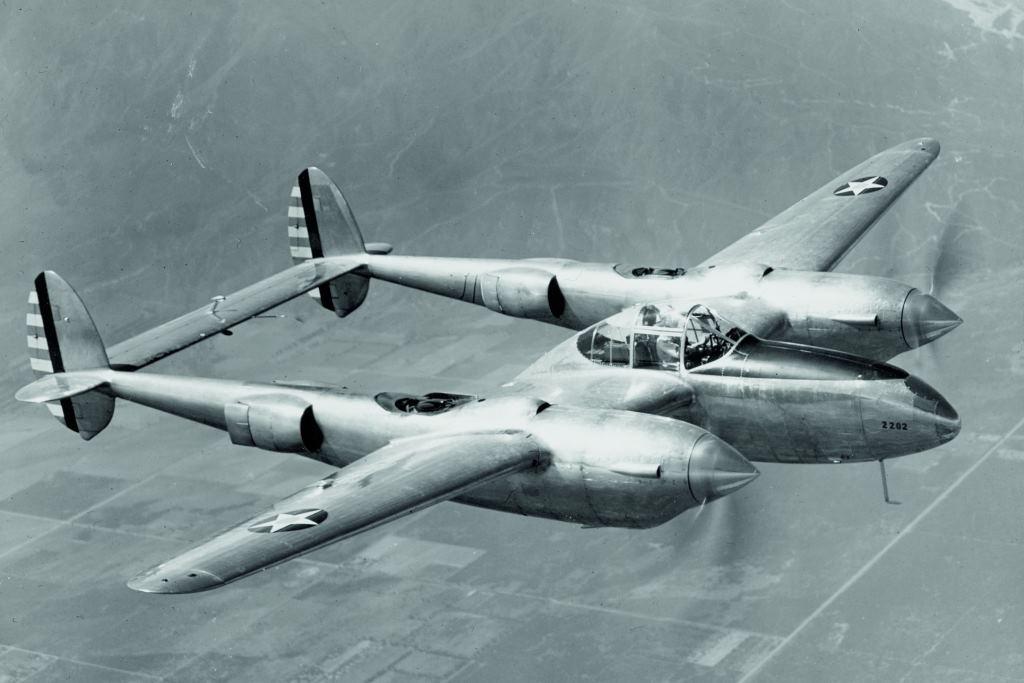
 39-689 was the first of thirteen YP-38 service test aircraft that had been ordered by the U.S. Army Air Corps shortly after the XP-38 prototype, 37-457, had crashed on a transcontinental speed record attempt, 11 February 1939. 39-689 made its first flight 16 September 1940 with test pilot Marshall Headle at the controls. With hundreds of production P-38s being built, Lockheed continued to use the YP-38 for testing.
39-689 was the first of thirteen YP-38 service test aircraft that had been ordered by the U.S. Army Air Corps shortly after the XP-38 prototype, 37-457, had crashed on a transcontinental speed record attempt, 11 February 1939. 39-689 made its first flight 16 September 1940 with test pilot Marshall Headle at the controls. With hundreds of production P-38s being built, Lockheed continued to use the YP-38 for testing.
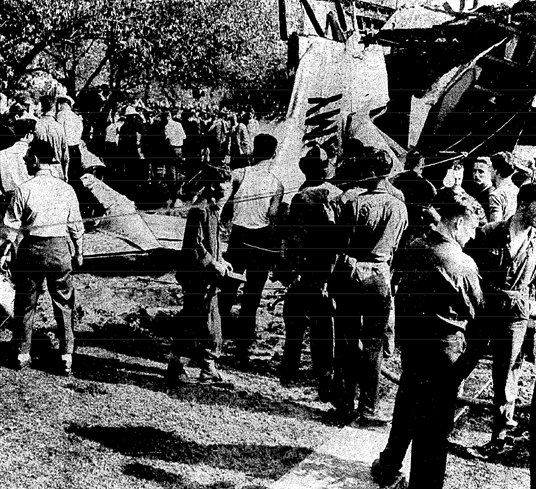
The YP-38s were service test prototypes of a single-place, twin engine long range fighter with a unique configuration. There was not a fuselage in the normal sense. The cockpit, nose landing gear, and armament were contained in a central nacelle mounted to the wing. Two engines and their turbochargers, cooling systems and main landing gear were in two parallel booms. The booms end with vertical fins and rudders, with the horizontal stabilizer and elevator between them. The P-38 was 37 feet, 9–15/16 inches (11.530 meters) long, with a wingspan of 52 feet, 0 inches (15.850 meters) and height of 12 feet, 10 inches (3.952 meters).
The P-38’s wings had a total area of 327.50 square feet (30.43 square meters). Their angle of incidence was 2° and there was 5° 40′ dihedral. The leading edges were swept aft 5° 10′.
The YP-38 had an empty weight 11,171 pounds (5,067 kilograms). The gross weight was 13,500 pounds (6,123 kilograms) and the maximum takeoff weight 14,348 pounds (6,508 kilograms).
 The YP-38 was powered by two counter-rotating, liquid-cooled, turbosupercharged 1,710.597-cubic-inch displacement (28.032 liter) Allison V-1710-27 right-hand tractor and V-1710-29 left-hand tractor, single overhead cam (SOHC) 60° V-12 engines (Allison Engineering Co. Models F2R and F2L) with a Normal Power rating of 1,000 horsepower at 2,600 r.p.m., and 1,150 horsepower at 3,000 r.p.m. for takeoff. They drove three-bladed Curtiss Electric constant-speed propellers with a diameter of 11 feet, 6 inches (3.505 meters) through a 2.00:1 gear reduction. In a change from the XP-38, the propellers rotated outboard at the top of their arc. The V-1710-27/-29 engines were 7 feet, 1-5/8 inches (2.175 meters) long, 2 feet, 5-9/32 inches (0.744 meters) wide and 3 feet, 0-17/32 inches (0.928 meters) high. The V-1710-27/-29 weighed 1,305 pounds (592 kilograms)
The YP-38 was powered by two counter-rotating, liquid-cooled, turbosupercharged 1,710.597-cubic-inch displacement (28.032 liter) Allison V-1710-27 right-hand tractor and V-1710-29 left-hand tractor, single overhead cam (SOHC) 60° V-12 engines (Allison Engineering Co. Models F2R and F2L) with a Normal Power rating of 1,000 horsepower at 2,600 r.p.m., and 1,150 horsepower at 3,000 r.p.m. for takeoff. They drove three-bladed Curtiss Electric constant-speed propellers with a diameter of 11 feet, 6 inches (3.505 meters) through a 2.00:1 gear reduction. In a change from the XP-38, the propellers rotated outboard at the top of their arc. The V-1710-27/-29 engines were 7 feet, 1-5/8 inches (2.175 meters) long, 2 feet, 5-9/32 inches (0.744 meters) wide and 3 feet, 0-17/32 inches (0.928 meters) high. The V-1710-27/-29 weighed 1,305 pounds (592 kilograms)
The YP-38 had a maximum speed of 405 miles per hour (651.8 kilometers per hour) at 10,000 feet (3,048 meters) and it could climb from the surface to 20,000 feet (6,096 meters) in six minutes. Normal range 650 miles (1,046 kilometers).
Lockheed built one XP-38, thirteen YP-38s, and more than 10,000 production fighter and reconnaissance airplanes. At the end of World War II, orders for nearly 2,000 more P-38 Lightnings were cancelled.
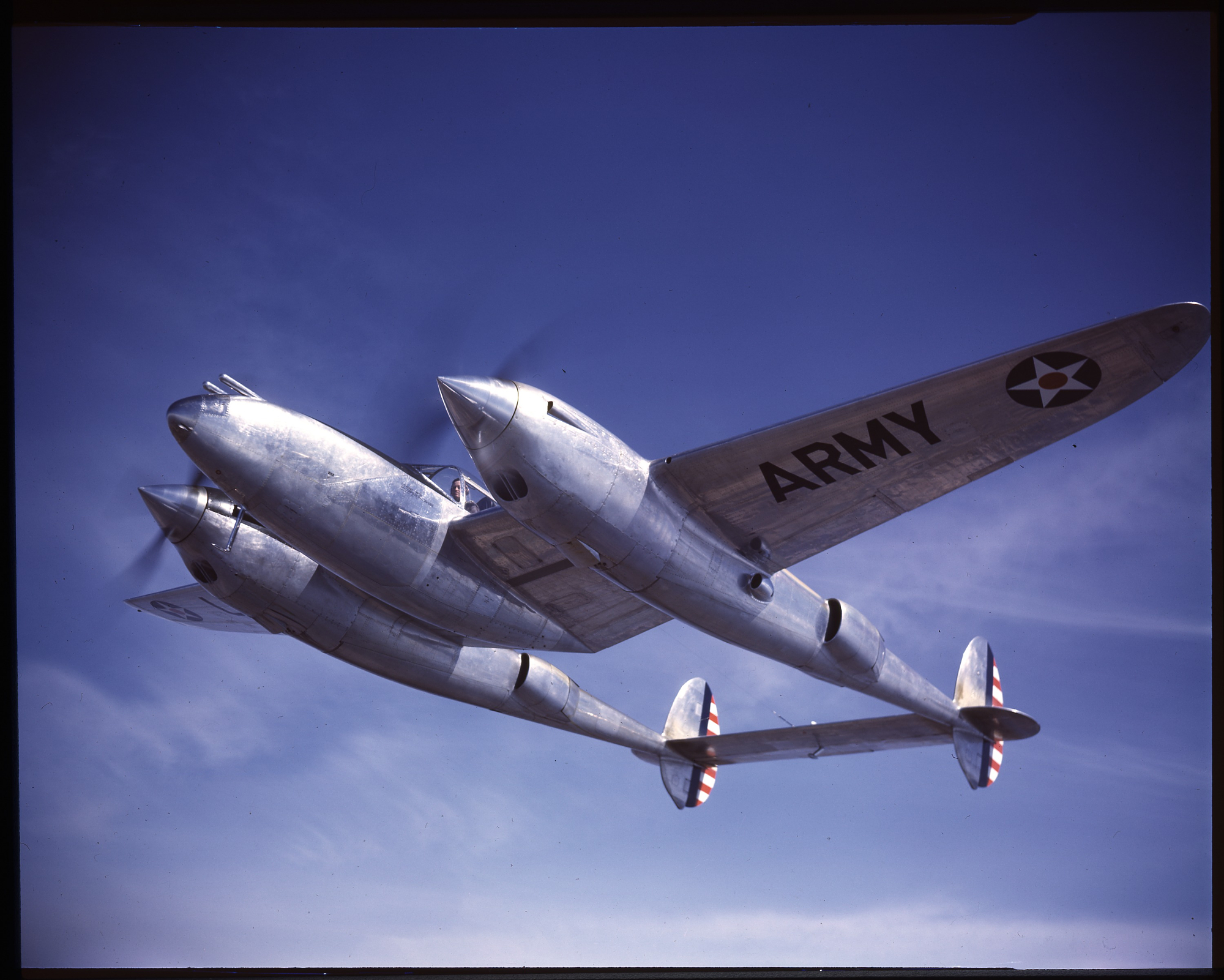
Ralph Burwell Virden was born 11 June 1898, at Audobon Township, Illinois. He was the second child of Hiram R. Virden, a farmer, and Nancy Carrie Ivy Virden.
Virden attended Bradley Polytechnic Institute at Peoria, Illinois. At the age of 17, 15 October 1918, Ralph Virden enlisted in the U.S. Army. With the end of World War I less than one month later, he was quickly discharged, 7 December 1918.
In 1919, Ralph Virden married Miss Florence I. McCullers. They would have two children, Kathryn and Ralph, Jr. Kathryn died in 1930 at the age of ten years.
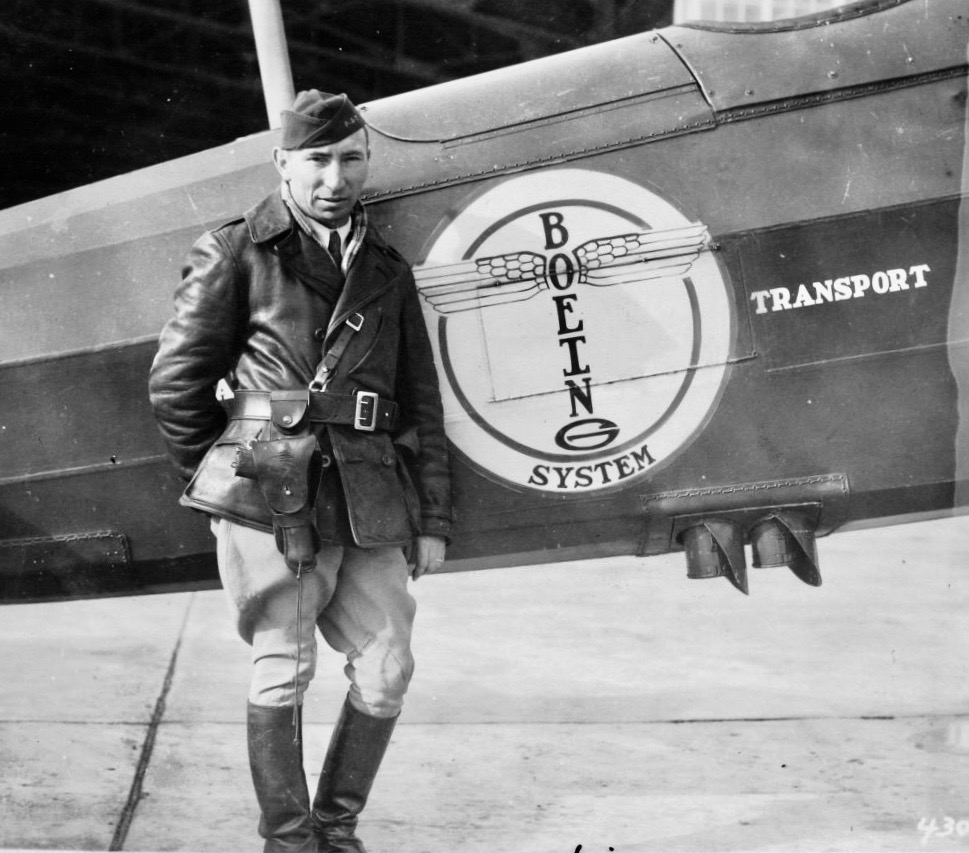
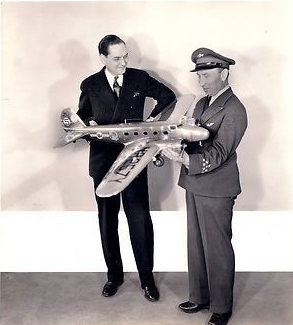
During the mid-1920s, Virden flew as a contract mail pilot. He held Airline Transport Pilot Certificate No. 628, and was employed by Gilmore Aviation and Pacific Air Transport. For thirteen years, Virden was a pilot for United Air Lines. He joined Lockheed Aircraft Company as a test pilot in 1939. He had flown more than 15,000 hours.
Virden lived at 4511 Ben Ave., North Hollywood, California, with his family. Ralph, Jr., now 19 years of age, was also employed at Lockheed. (Following his father’s death, the younger Virden enlisted in the United States Navy.)
After the accident, Lockheed, the Air Corps and the National Advisory Committee on Aeronautics (NACA) undertook an extensive test program of the P-38.
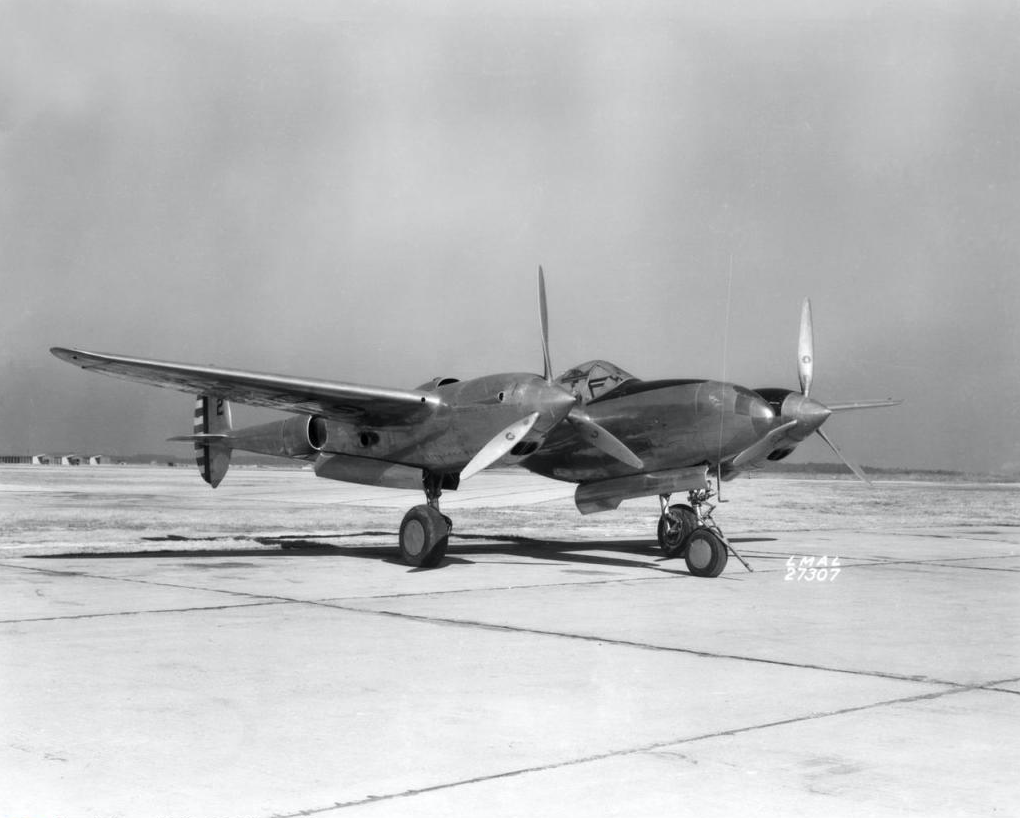
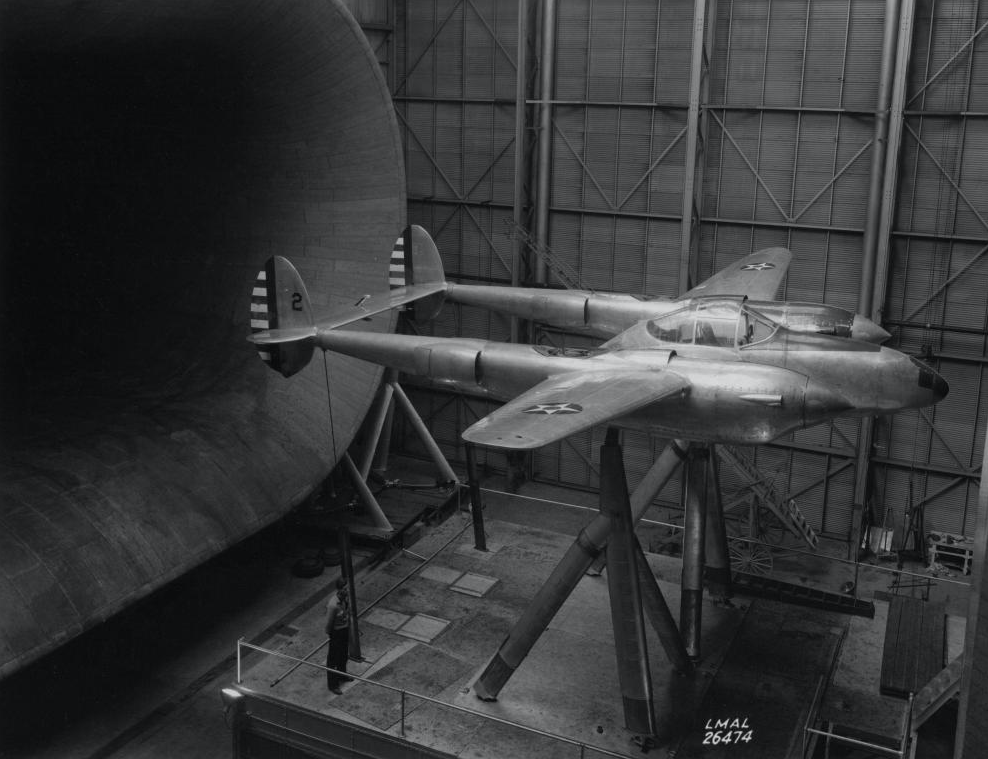
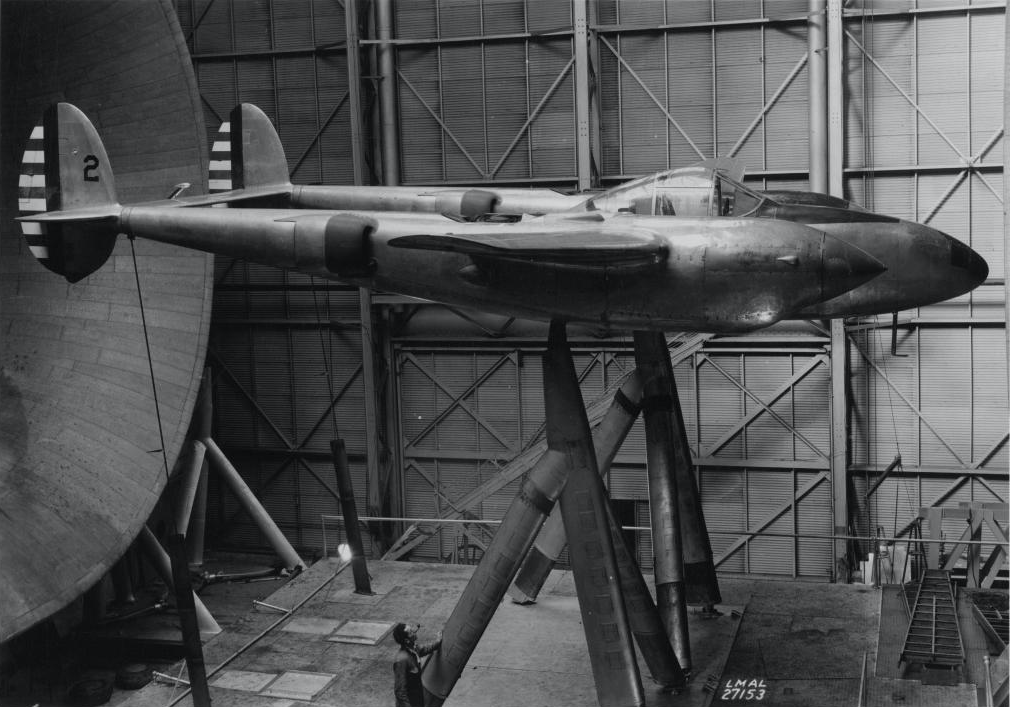
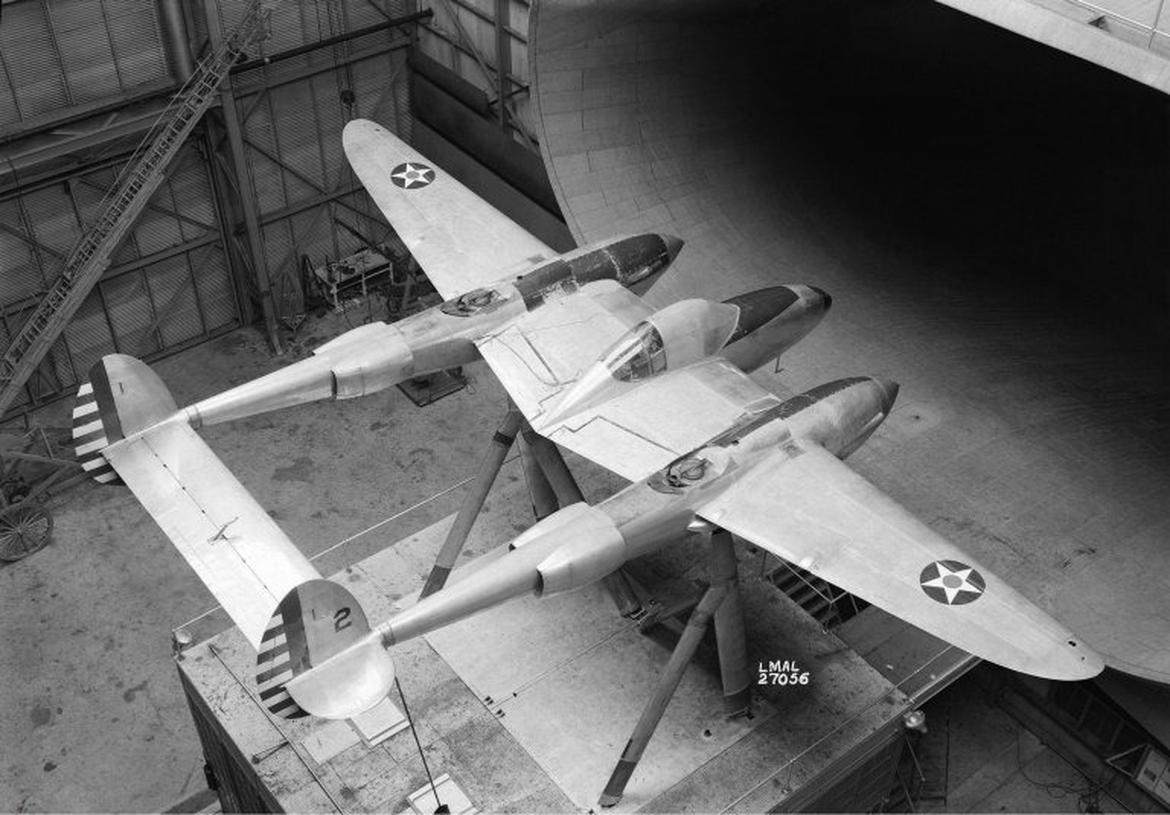
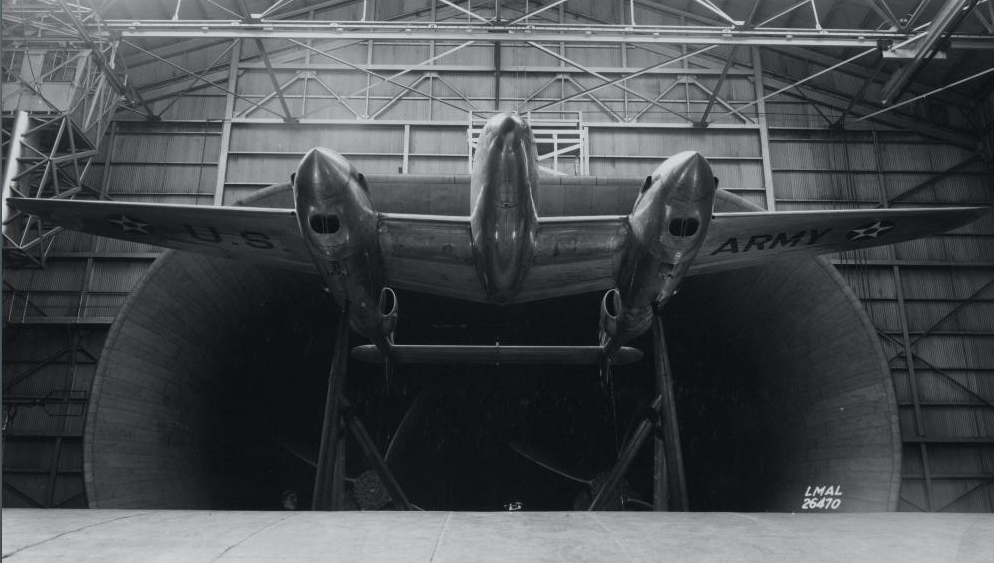
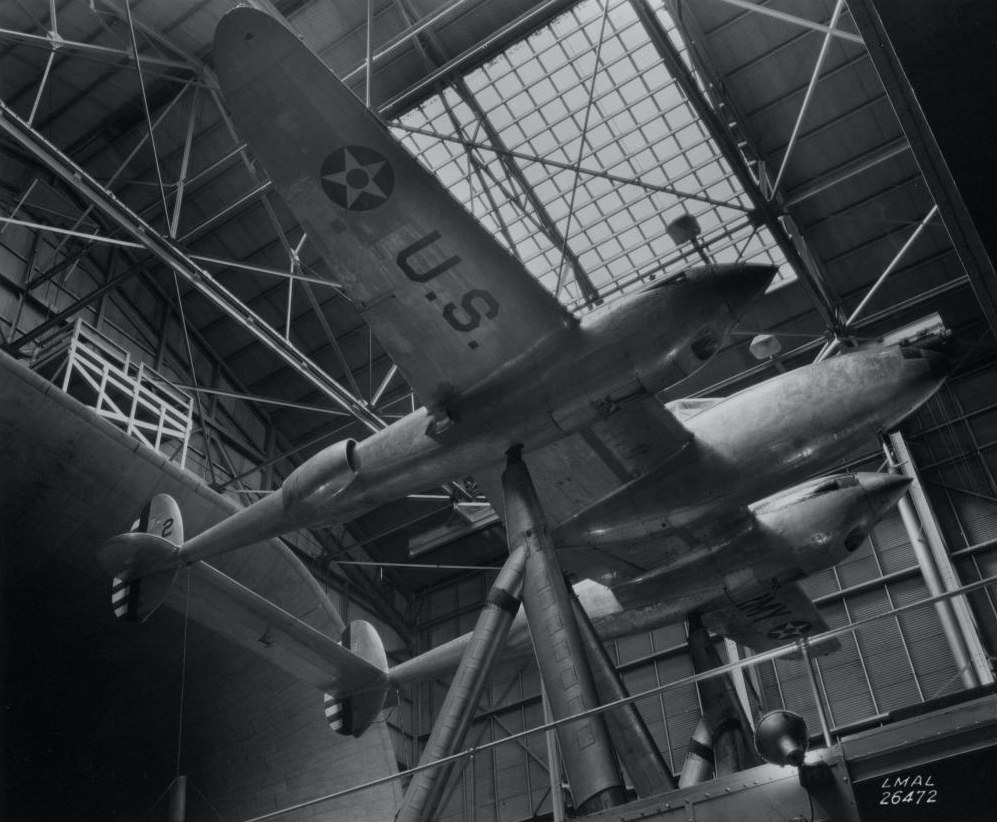
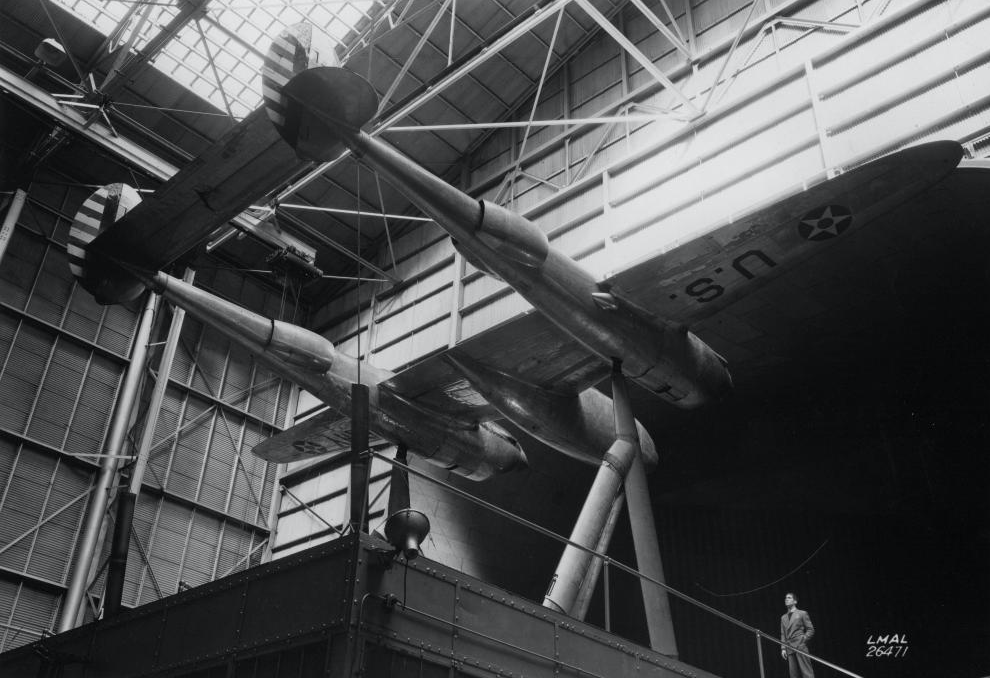
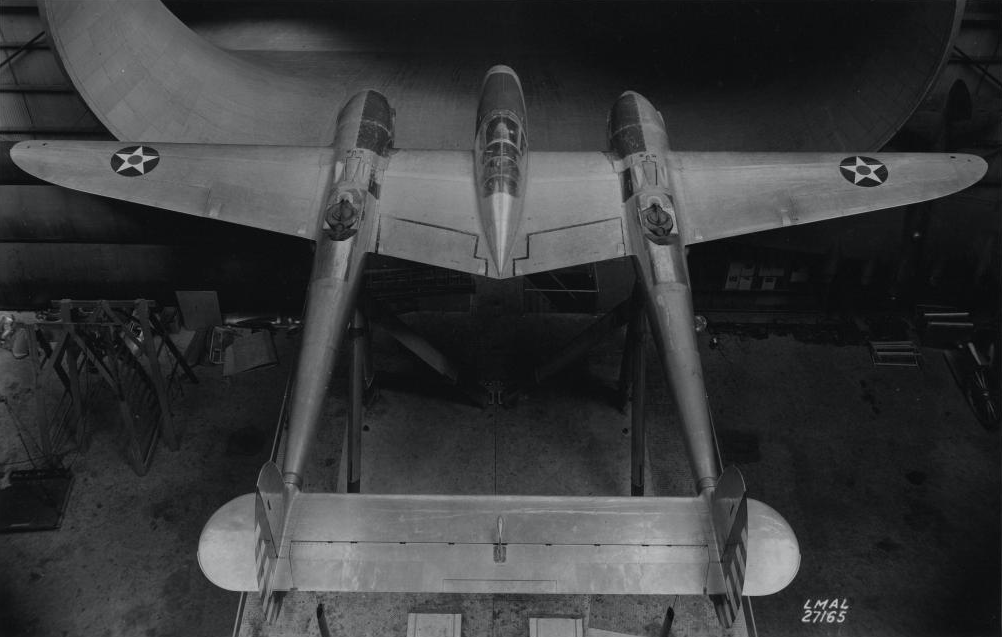
© 2018, Bryan R. Swopes
